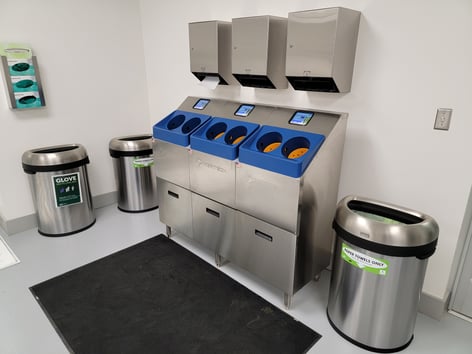Developing a Positive Food Safety Culture in 2023
A lot has changed over the past few years on how the food processing industry operates. From COVID-19 to new FSMA updates, the industry has had to adapt faster than ever before. These industry wide changes can also directly affect a company’s food safety culture. It is therefore necessary that companies pay close attention to what can impact a positive food safety culture so that they can readily adapt to the changing industry.
The Impact of Staff Shortages on Positive Food Safety Culture
One major impact that the global pandemic caused across many industries is the loss of a long-term workforce. Whether due to layoffs or new opportunities in remote spaces, many veteran workers either found new jobs or decided to retire early. These types of workforce upheavals have the potential to undo years of positive food safety culture cultivation.
The good news is that companies have found new ways to adapt to training employees quickly without compromising their strict hygiene standards. One of the ways in which co mpanies have done this is with automated hygiene. By using CleanTech® Automated Handwashing Stations and Automated Boot Scrubbers, companies can easily train new employees on proper hand hygiene and footwear sanitation with these easy-to-use systems. Just 12 seconds of leaving hands in the systems removes 99.9% of harmful pathogens and slowly walking though boot scrubbers properly sanitizes footwear without the risk of cross-contamination. Food safety managers can therefore focus on other areas of the facility that need attention for their positive food safety culture.
mpanies have done this is with automated hygiene. By using CleanTech® Automated Handwashing Stations and Automated Boot Scrubbers, companies can easily train new employees on proper hand hygiene and footwear sanitation with these easy-to-use systems. Just 12 seconds of leaving hands in the systems removes 99.9% of harmful pathogens and slowly walking though boot scrubbers properly sanitizes footwear without the risk of cross-contamination. Food safety managers can therefore focus on other areas of the facility that need attention for their positive food safety culture.
Learn more about how automated hygiene can overcome risks caused by labor shortages
Standardizing Hygiene SOPs to Support a Positive Food Safety Culture
A common buzzword among food safety circles is “standardization”. Consistent pathogen removal from plant to plant is a crucial aspect of food safety. One of the bigger challenges recently has been standardizing hygiene SOPs across a multi-layer facility with two or more hygiene zones or even multiple facilities across the country. Making sure staff in different areas and working under different shift leaders are all following hygiene SOP’s is no small task. Standardizing the hygiene process across all a company’s plants, helps to make sure that everybody understands what consistent hygiene goals need to be. 
Standardization is really about consistency. If a hygiene process is put into place, then that sets the foundation for your organization's positive food safety culture. It is therefore crucial to make sure that every process implemented is simple and easily understood by all employees. A simple, automated, and standardized hygiene process develops consistency from person to person and from facility to facility.
Learn about the benefits of setting good standard hygiene practices
Companies that are the most willing to adapt new technologies and solutions as a response to the ever changing world of food safety have shown that they can overcome the many challenges inherent in this dynamic industry. For them, developing a positive food safety culture is that much easier.






